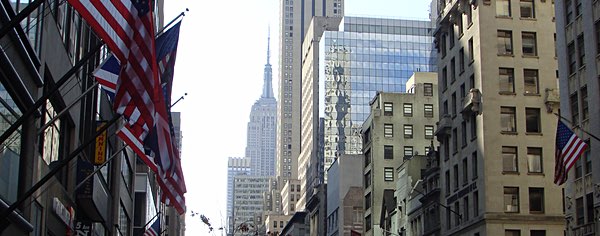- By New York State Comptroller's Office
- News
 Print
Print 
Private elevator inspectors in New York City are missing hazardous violations and allowing unsafe conditions to go unrepaired, according to an auditreleased today by New York State Comptroller Thomas P. DiNapoli.
"In a vertical city, with tens of thousands of elevators carrying millions of people, it is unacceptable that New Yorkers should have to worry about false inspections or hazardous conditions. Even in a limited group of inspections, we found nearly every one missed violations that could pose risks to safety," DiNapoli said. "While the Department of Buildings deserves credit for taking steps to address the concerns and recommendations we've made in our audit report, the agency needs to ensure that all inspections are complete and thorough so that New Yorkers can feel confident that the elevators they ride in are safe."
DiNapoli's audit looked at work done by certified elevator inspectors who worked for companies contracted by the New York City Department of Buildings (DOB). While DOB has 48 staff inspectors (as of July 2017), it regularly uses private companies to perform the annual inspections required of the city's 71,000 elevators. Auditors and DOB inspectors accompanied the non-DOB inspectors as they examined 12 elevators in nine buildings in the five boroughs.
Among the findings in DiNapoli's audit:
- Two of the non-DOB inspectors falsely certified that they had inspected 15 elevators in 14 buildings before they had actually performed the inspections (several of these were not in the audit sample).
- Violations were missed or overlooked in 11 of the 12 elevators in the sample.
- Three non-DOB inspectors failed to spot that a device that keeps doors from opening between floors was defective in elevators at three different buildings. The problem could cause elevator doors to open between floors and is considered an imminent hazard, which requires the elevator to be shut down for repair. A fourth non-DOB inspector did catch the problem at another building. However, he decided it was not an imminent hazard and kept the elevator in service, saying his company's policy did not require a shutdown. A DOB inspector later took the four elevators out of service.
- At four of the nine sampled buildings, non-DOB inspectors did not inspect the tops of elevator cars or the elevator pits, which are required by the city's contract and are standards set by the American Society of Mechanical Engineers. When asked why they did not inspect the roofs or the pits, the inspectors said they were concerned for their safety and that such inspections are prohibited by their companies. One of these inspectors, who also falsely signed off on inspections before they had been performed, was terminated for unprofessional behavior.
- DOB inspectors pointed out 29 violations that were overlooked by non-DOB inspectors, including a non-working emergency phone, an expired extinguisher in an elevator machine room, and missing maintenance schedules and records. In some cases, the violations were not identified because the non-DOB inspectors were using less strict procedures than DOB's own inspectors.
- Inspectors found hoist cables in two elevators in two different buildings that showed signs of wear, called rouging. The problem was missed at one building and noted at the other, but the non-DOB inspector didn't have the right tool to measure the cable thickness which would have determined the seriousness of the problem. The inspector was subsequently terminated by his company for unprofessionalism.
- 6,741 (11 percent) of the 63,314 annual elevator inspections DOB required be completed by non-DOB inspectors in 2016 were not done.
- 8,807 (13 percent) of the 62,166 annual elevator inspections DOB required be completed by non-DOB inspectors in 2015 were not done.
DiNapoli's audit recommended improvements to the inspection process, including:
- Reinforcing with elevator inspection companies the required procedures for proper elevator inspections and for identifying elevators that need to be taken out of service.
- Mandating that non-DOB inspectors comply with DOB procedures when performing elevator inspections.
- Ensuring that DOB communicates upcoming inspections with building owners so they can gain access.
- Establishing specific deadlines by which building owners should respond to no-access inspection attempts.
- Using more forceful measures, including monetary penalties, against building owners when elevator tests are not performed.
DOB officials agreed with 8 of the 9 audit recommendations, and noted that they have already taken steps to implement changes to improve oversight of inspections.
v14i22



